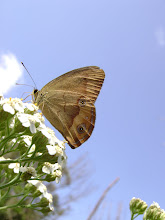The current Issue of the Darling River has it's roots in ignorance, lack of continuity of focus and understanding plus run amok ego and greed. The Darling River is one of the main arteries of the Australian continental BODY. All along and within the River System lives an amazingly complex interconnected section of the Australian BIOSPHERE. There are also key components of that Biosphere that are helpful indicators to the health of the system.
I have my own ideas as to how to fix this main artery:
1. Continuity of understanding and respect by creating a comprehensive long term vision of education. Base this education on a)teaching within every single school (and associated community network) within the Catchment System and b) teaching via mass media.
2. Use the concept of "totems" to carry this understanding and respect into future generations' life styles. Create a comprehensive "TOTEM" based educational framework, that is fully coordinated and on equal footing with economic educational components of current mainstream educational policies.
3. Find the "TOTEMS" (eg Koala, dragonfly, ant, goanna, crayfish, habitat, river red gum, wallaby etc- the list could be refined by proper consultation with the traditional land owners also ). Pool current ecological wisdom to isolate key indicator species. Imprint these "TOTEM" qualities and understandings onto every future student generation - Thus safeguarding their survival in their HABITATS via full integration of the "TOTEMS" system within the environmental and economic educational frameworks of the Australian Schooling network.
A simple start here:-
- Create the school "house" system as the "TOTEM" base for a particular location/section of Catchment.
- Fully integrate the learning of that TOTEM within each individual school.
- Involve the local knowledge, science community, businesses and core catchment authorities to mentor the knowledge.
- Ensure that each student leaving the education system has a deep and thorough understanding and care for at least ONE TOTEM.
- Make this a hundred year plan.
4. Implement a wide scale revegetation program of monumental proportion.
Creating industry in organic nurseries, provincial species seed distribution, habitat restoration networks and other industry incentives based around the current and future utilities & transport corridors and other public & crown land. This RESOURCE MANAGEMENT approach, that caters for seed stock plants, education, sustainability and habitat "demonstration" can fill a massive niche, that is missing in Australia - that of sustainable "organic" nursery and revegetation networks, seed networks and local habitat restoration industries.
5. Ensure that CARBON TRADING and CARBON OFFSET PROGRAMS are based on only the soundest of biodiversity principles - instead of the quick fix approach taken by many of industry and the market place opportunists, when initiatives such as these are let loose in the public market place and supported by government sectors and funding support.

Some Darling River (Murray Darling Catchment Links) on bluecray blog
Aboriginal Economy and Society - Educational link & Sociological Remarks from Australian National University - Darling River
Platypus by Ann Moyal - a preview page
Pauline McLeod - Aboriginal Storyteller - an interview
Aboriginal Principal for Sustainable Development as told in tradition law stories by Karl Eric Sveiby (google HTML version) by sveiby knowledge associates
Report to the Murray Darling Basin Commission (2003) - Indigenous response to the Living Murray Initiative (google HTML version)
The Salt that Ate Australia - note on BBC Costing the Earth program 1/04/04 BBC Radio 4 (google HTML version)
Aboriginal Studies Press, Library, Research, Audiovisual Library, Weblinks, News at Australian Institute of Aboriginal and Torres Strait Islander Studies (AIATSIS)





